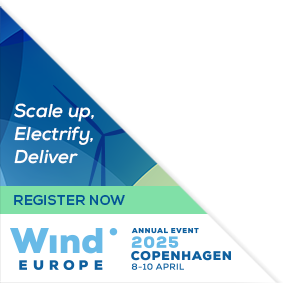Presentations
Siblings:
ProceedingsProgrammeSpeakersPostersContent PartnersPowering the FutureMarkets TheatreResearch & Innovation in actionStudent programmePresenters dashboard
Influence of platform yaw motions on wake, and subsequent impacts on downwind turbine power and loads.
Marit Kvittem, Senior Research Scientist, SINTEF Ocean
Abstract
Floating turbine foundations cause motions that introduce new unknows to the field of wind wake estimation, that again leads to uncertainties in the load and power estimation in waked wind conditions. Recent studies have shown significant effects of floater motions on power production and emphasizes the need for the effect to be integrated into existing wind farm production tools. Also, field measurements in installed FOWT wind farms have shown that there are measurable effects of the wake on floater yaw motions and mooring line loads. It is suspected that wake meandering can excite sway and yaw, because of partial wake immersion. In addition to floater yaw, wake steering from supervisory farm control will influence the wake path, and the combined effect is important to evaluate when defining farm control strategies for floating wind farms. This paper describes a study that aims to quantify the effect of time-varying yaw misalignment, from floater motion and/or turbine yaw control, on the power production and turbine loads. Two IEA 15 MW wind turbines on the VolturnUS floater, serves as the case study. A recent implementation of steady and varying yawed inflow in wake simulation software DIWA was used to simulate the wind field and power production. Power production and loads for the down-wind turbine in yaw cases were benchmarked against results for results without time varying turbine yaw. The study shows that dynamic yaw motion of an up-wind turbine can both increase and decrease power production, depending on the wind speed and turbine spacing. The difference in power increases with increasing yaw amplitude (up to 2%), and decreases with increasing turbine spacing. Yaw motion influences the wake path (<15% increase in standard deviation of the horizontal wake path), which again influences the yaw motions, power production and loads of the downwind turbine.










